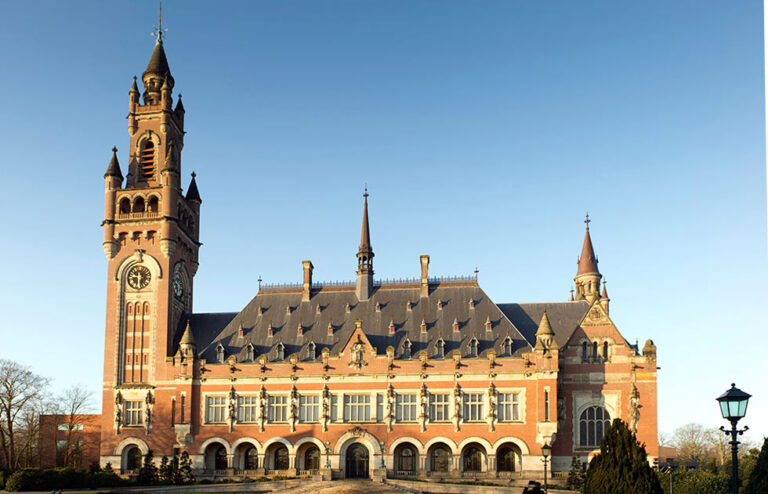
Spotlight
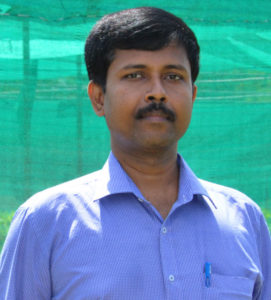 By Thiruchelvam Ramu*
By Thiruchelvam Ramu*
The ICT-powered holistic farming solution
19 years ago there was a news of farmers of Madhanapalli in Andhra Pradesh throwing tomatoes on road due to price crash. This news item had caught our imagination. We, a team of Information Technology (IT) professionals, believed that the immense potential of Information and Communications Technology (ICT) could solve such cruel problems effectively and started the Mission IT-Rural.
In the 19+ years of determined efforts in the domain of ICT4Agriculture, we analysed, designed and successfully piloted a unique, sustainable model that comprehensively deals the key areas like improving quality; increasing yield; enhancing price realisation for farmers; balanced production for food security and price control; facilitating farm labour and machinery contracts and strengthening institutional farm credit system.
We were of the firm belief that the need of the hour was to transfer the merits of ICT to work at village level, in line with the rural characteristics, to benefit the farmers in terms of yield, quality, profit and comfort level to make farming viable and preferable. More so because while science and technology, particularly ICT, had been playing the key role in the industrial revolution and in providing solutions for solving real life complex problems, it was yet to unleash its full potential in the farming sector.
We knew that performance of the agriculture sector, particularly smaller and marginal farmers, still remained choppy and the viability and comfort level of doing farming have not improved significantly.
This was the logic that drove us — a group of self realised, self funded IT professionals with their 19+years of committed efforts to take up a novel mission which we named Mission IT-Rural.
We professionals came together and analysed, designed, piloted and validated a unique, holistic, sustainable, scalable village-level ICT driven farming solution that could deliver production based on demand, site-specific knowledge dissemination, better quality and yield and fair price. We had certain specific goals in our minds:
- To set up ICT powered Agriculture Management Centres at Panchayat level, on Public-Private Partnership (PPP) model to empower farmers to complete their entire crop lifecycle requirements, with the help of two dedicated employees working there.
- To make available of Live Crop-variety production Data, weather report and water level of local water-bodies.
- To overcome the constraints of small & marginal farmers through aggregating their small input requirements for doorstep delivery and farm products for direct marketing (Semi automated e-commerce).
- To improve the trust factor between farmers and business community.
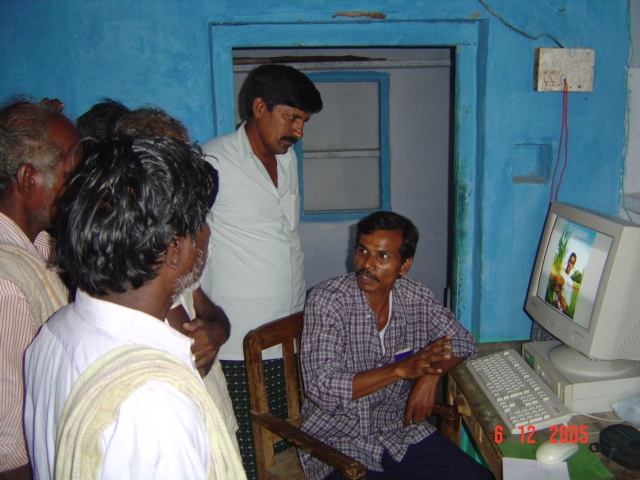
With these goals in our minds, we explored ways to reach the farmers at their doorstep and finally the model was successfully piloted in Pulivendula Mandal, Kadapa District of Andhra Pradesh. The project there was implemented during 2004-2006. We could set-up Agriculture Life-cycle Management Centres (Kiosks) in all Panchayats (irrespective of revenue strengths of Panchayats) on a PPP model, more specifically using Franchiser-Employee Model. We appointed two persons per Kiosk to work as a human interface between the farmers and ICT solution; Operational expense was borne by the Private partner and the Infrastructure cost was borne by Government. The system became sustainable in two years from the time of implementation.
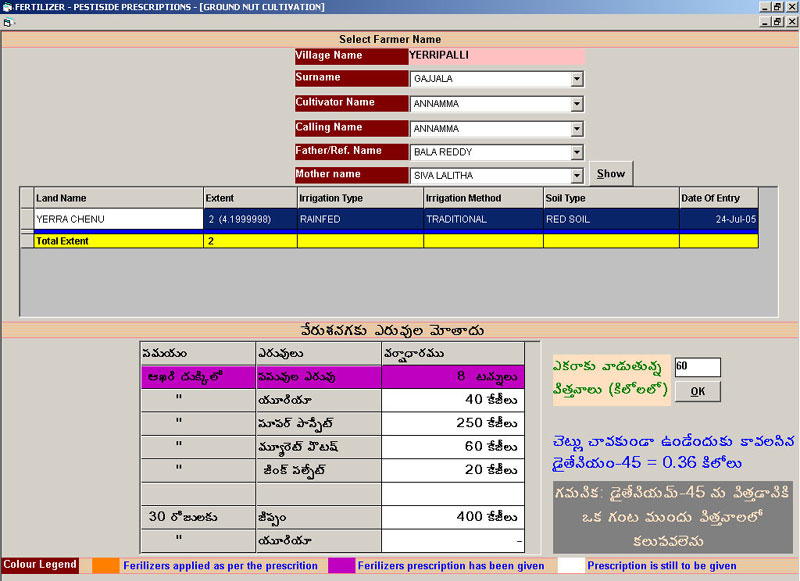
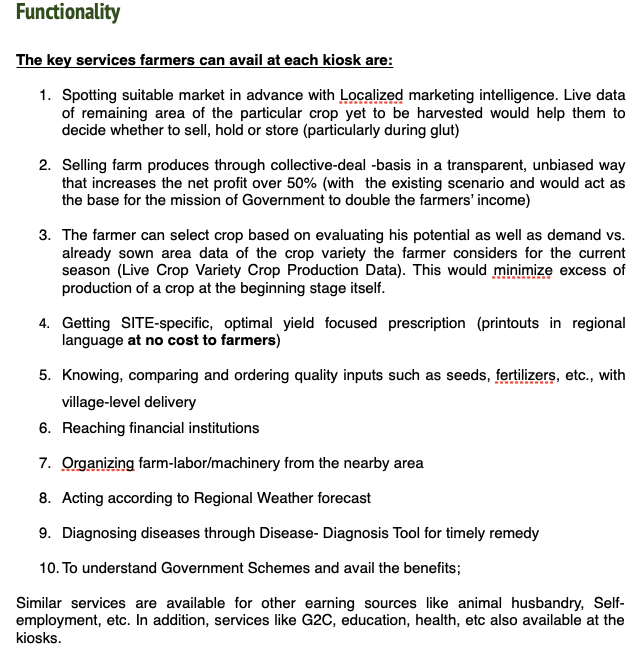
The model earned the distinctive remark from the collective wisdom of the Government (Rhastriya Krishi Vikash Yojana Scheme) that ‘the proposed model is unique, proven, replicable one and would pave way for new extension in the country’.
On seeing the outcome, the project was included in the ‘Rhastriya Krishi Vikash Yojana’ scheme on PPP model and the sanctioning committee of the scheme, approved and allocated fund to implement the model in one district with the remark that it was a unique, proven, scalable one and would pave way for new extension system in the country’ (2009). But due to the sudden political crisis happened around that time, the project was not implemented.
However the team is not disheartened and continues the efforts with a determined passion for a large-scale implementation. Driven by the firm belief that our 19+ years of self-realised, self-funded efforts have the answer for Indian farm sector problems, we have now taken up another similar project at Veppangkulam village in Sivaganga district of Tamil Nadu, too, under our Mission IT-Rural, with an aim to double farmers’ Income. It is an ongoing project since 2018 and we started it with our own meagre resources. We have led an initiative by means of effective management of local water bodies (tanks) and better farming lifecycle management.
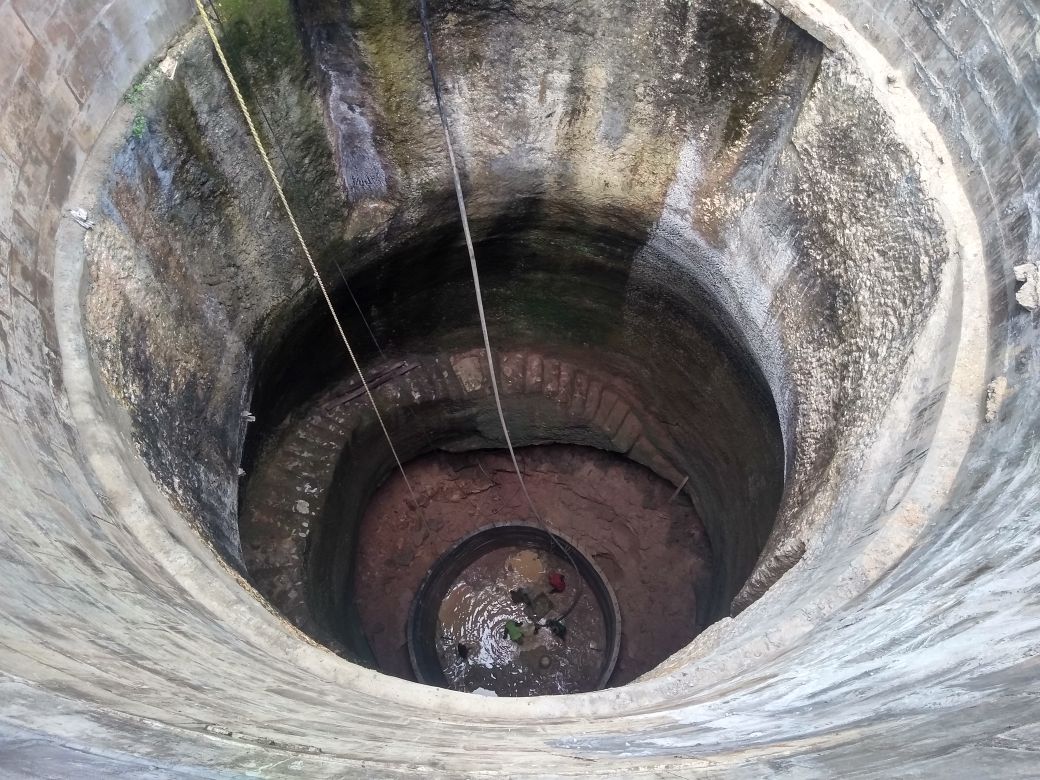
At Veppangkulam village, with the financial contribution of Rs. 10 lakh from villagers and Rs. 1.5 lakh from the government, the village has revived six water tanks (total of 140 acres area and 20 Km length of nine supply channels). Because of the use of ICT, agriculture, which was reduced to 100 acres from 500 acres, has now increased to over 300 acres; With the balance water at tanks, second crop (during Summer) cultivation is also now back in action and about 30 acres area successfully ventured in 2019-20.
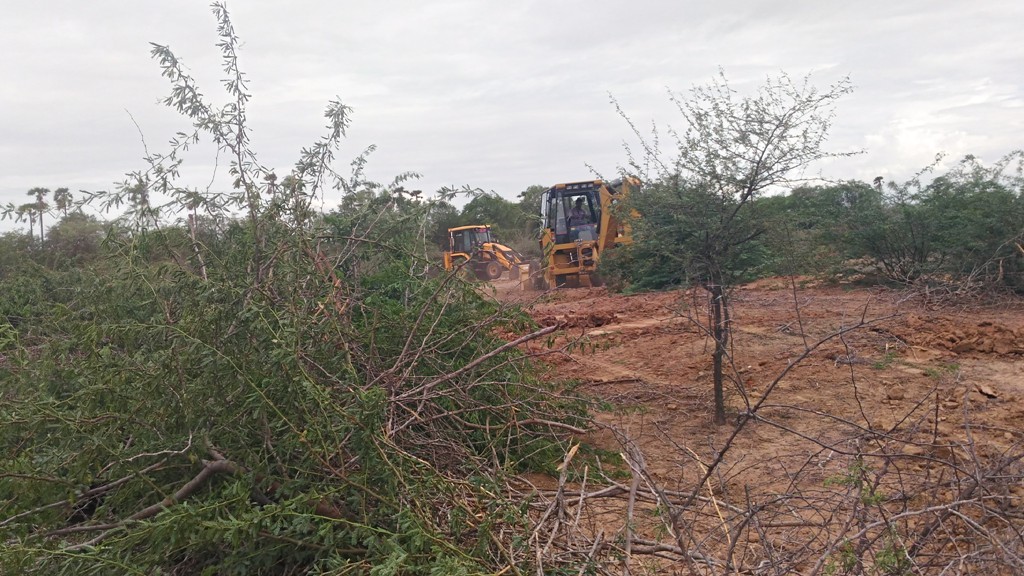
By bringing fallow lands back into farming; reducing input cost, increasing yield and improving quality through proper crop management; healthy water bodies; second crop opportunities and marketing interventions has guided the Veppangkulam village to reach the ambitious goal of doubling farmers’ income, and Veppangkulam village has now increased its revenue to over 1.5 crores and the ongoing momentum is expected to take the village Rs. 3+ crore revenue village.
The advantage of our project was that lack of knowledge, accessibility and affordability could not be a barrier as the technology was made to reach the farmer by the dedicated personnel in a most reasonable way. We could device an end-to end solution that optimised farming life-cycle.
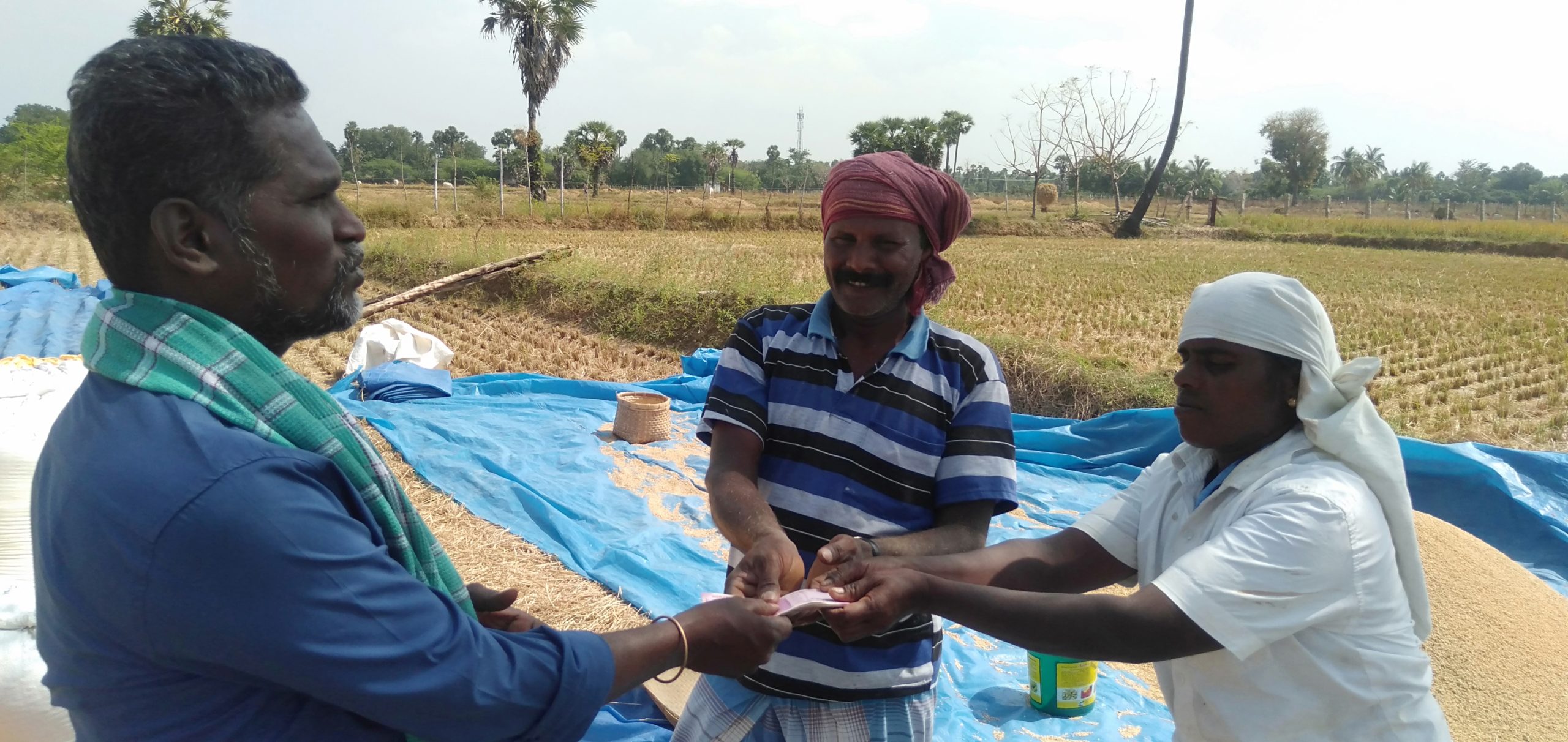
The farmers were the ultimate beneficiaries as they got access to better knowledge, quality inputs, man/ machine power, more formal finance, market intelligence, better bargaining power while selling farm produces, price for the actual weight, storages, resulting in an increase of over 30% profit. Their comfort level of doing farming too improved, their tension was reduced as better risk management reduces the frustration level. It also increased the working opportunities for the farm workers and employable candidates got connected with urban demand. Social welfare schemes and missions to reach and benefit the eligible beneficiaries. The Better Return-On-Investment for farmers also significantly reduced the problems of banks in crop loan recovery. The business entities too gained as they could understand and analyse the trend of the farmers, particularly during pre-season for better estimate, manufacture/ imports and distribution of seed, fertiliser, effectively promoting products, getting customer queries and sales and services, and timely stock management as per the on- season demand. As for the consumers, they could get quality food items at steady price.
The Model did not eliminate middlemen but tamed them to the benefits of farmers and consumers as well.
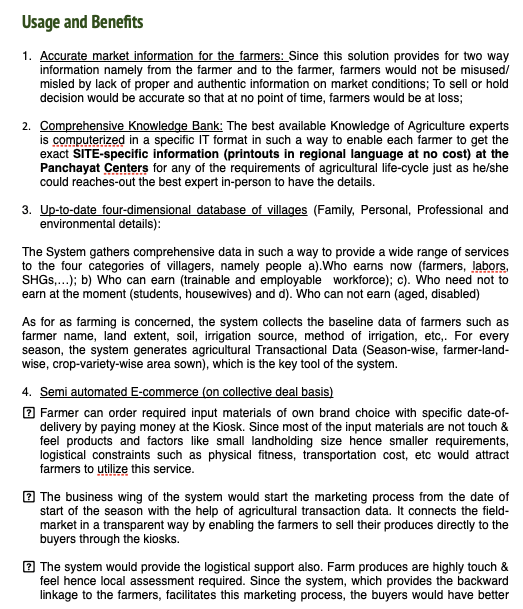

The very unique feature of IT-Rural model was that, benefits of technology was made to reach the farmer at their doorstep through our own personnel. It was a pro Public-Private-Partnership Model, infrastructure was owned by Government and run by the Private partner. The Employer- Employee approach eliminated the social barrier for villagers to approach the kiosks to avail services. All knowledge related services were at no cost to farmers and it was a subscription free model too. So, all the farmers (particularly smaller and marginal farmers) could get the up-to-date, precision farming oriented knowledge without any financial barriers. The model was designed in such a way to set up kiosks in all Panchayats of the project area, irrespective of revenue potential, hence there was no geographical barrier for the villagers to reach the kiosks. The Model did not buy or sell any products hence became a neutral platform (no trust barrier). The model could pave way for setting up weather recording system at villages and thereby providing lead for village-level crop insurance scheme. The kiosk had weighing machine thereby facilitating the farmers to get price for the actual quantity.
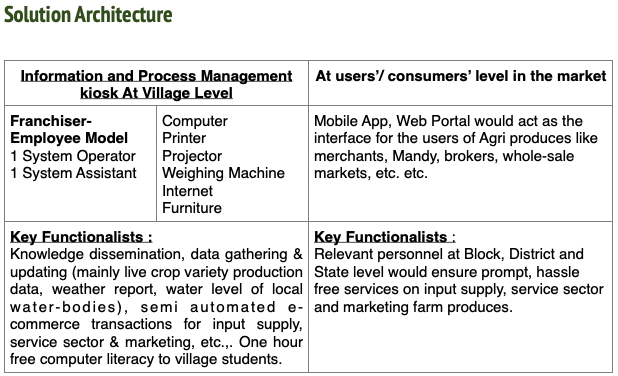
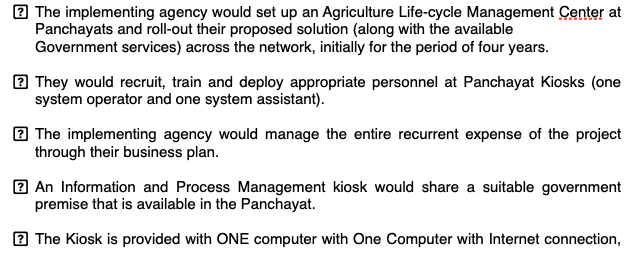

It was a technology driven, agriculture focused, self-sustained model, so easy for scaling up. We also provided one hour free computer literacy to village children at no cost to them. Hence, we could achieve the desired results by minimising exploitation of
Moreover, enhancing price realisation for farmers led towards balanced production for food security and price control; facilitation of farm labor and machinery contracts, higher crop loan recovery and robust crop insurance. A realistically possible approach to empower small and marginal farmers to overcome their limitations and constraints through collective deals (input supply management and marketing).
*Thiruchelvam Ramu is the Originator and Project Director of Mission IT-Rural




